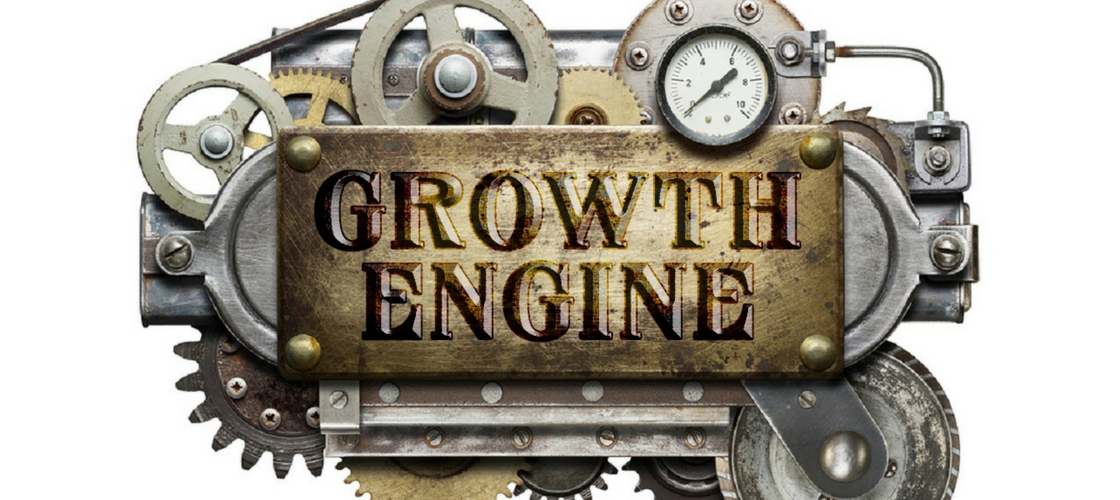This is the fourth part of our six-part intensive series on the Freedom Generator. If you missed the first article, you can read it here.
Feeding money into something called a Growth Engine just sounds exciting, doesn’t it? Drop your money into this Freedom Generator bucket, set a timer and then pull out a lot more money than what you put in!
If you’re ready to maximize your money, let’s dive in to what the Growth Engine is and how it works in your Freedom Generator.
What Is The Growth Engine?
Let’s start with what the Growth Engine is not. It’s not money that you use now. And it’s not money you tap into when you reach Financial Freedom.
So what is the Growth Engine? It’s the bucket that holds all of your retirement savings–the money you’re allowed to access only once you reach your government-approved retirement age. It’s the nest egg that’ll handle your increased expenses–like health care–during your retirement years. And it’s what will cover any shortfall from your Income Generator.
While your Income Generator’s job is to produce a steady, reliable cash flow for you after you achieve Freedom, the role of the Growth Engine is to multiply your money. With the Growth Engine, you tap into the power of time and compound interest to take on the types of investment risks you wouldn’t consider for your Income Generator. And, as a result, you reap the benefits of significant asset growth.
What Level Of Risk Is Right For Your Growth Engine?
Of course, you want to maximize the output of your Growth Engine assets while not taking on more risk than is appropriate for you. A quality financial advisor or even an online tool can help you nail down your risk profile. In creating that profile, you’ll consider things like
- Your age;
- Current financial situation;
- Future goals;
- Available assets; and
- Comfort level with risk and more.
Remember: Your Income Generator’s purpose is to fund your Freedom with Cash Flow. But your Growth Engine’s goal is growth and net worth. So it’s critical that, while you invest conservatively in your Income Generator, you adopt a more aggressive stance on your Growth Engine asset choices.
How Much Should You Invest In Your Growth Engine?
[memb_is_logged_in]
When you Pay Yourself First, you contribute first to your Cash Bucket. Then, you turn your attention toward investing in your Income Generator and Growth Engine. And you need to determine how much of your Pay Yourself First contribution goes into each of those investment buckets.
Until you’re within a few years of retirement, my rough rule of thumb is this: Put 10% of your pre-tax income into retirement funds (your Growth Engine) and 10% into non-retirement, income-producing assets (your Income Generator).
Keep in mind that a portion of that retirement funding might actually come from someone else. The government may provide financial incentives for funding your retirement or your employer may offer a contribution matching program.
If you’re eligible for an employee match, be sure to contribute at least the amount necessary to receive the full match. That’s completely free money! But if you’re self-employed, you’ll likely be the only one funding your Growth Engine.
So How Much Is Enough?
There are a number of factors to consider in identifying a target size for your Growth Engine. Again, a financial advisor is just the right resource for personalizing your plan. You’ll want to consider the following:
- How far are you from retirement age? Keep in mind that the rules about when you can access your money, tax rates and other factors might change before you can tap into your cash.
- When are you going to stop working or cut back on your work? If it’s before you can pull money out of your retirement funds, then consider putting more money into your non-retirement investment accounts to sustain you in the interim.
- Will you reach Financial Freedom before retirement? If not, build your Growth Engine so it will cover your Freedom shortfall until you’re at least 90 years old.
Community Question: How do you treat your Growth Engine assets differently than your Income Generator assets? Share your current approach and get feedback in the Financial Foundations community!
image credit: Bigstock/donatas1205
[else_memb_is_logged_in]
[memb_include_partial id=338]
[/memb_is_logged_in]
Dr. Tony is the co-founder of MindShift.money and the best-selling author of three books on personal and business finances. Having achieved Financial Freedom at 27, Dr. Tony believes that through Financially Fit Bootcamp and Cash Flow Cure everyone can get there. He has made it his life’s mission to help others live a life where their money works for them—not the other way around.
